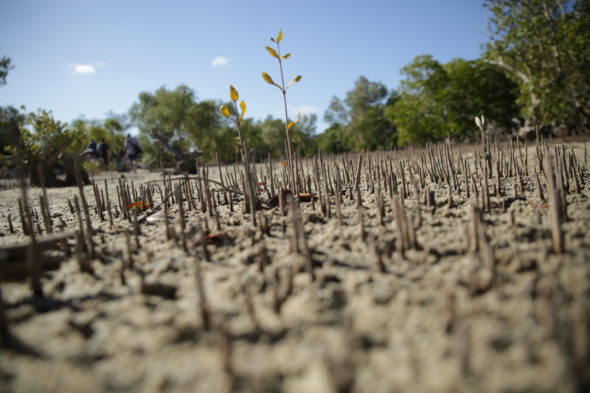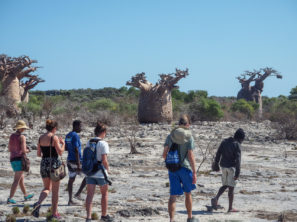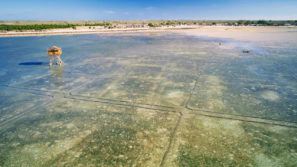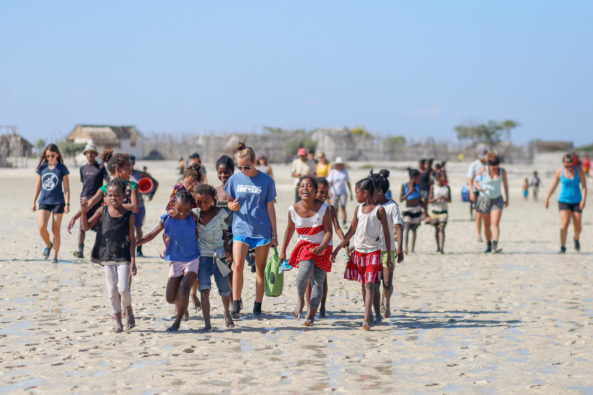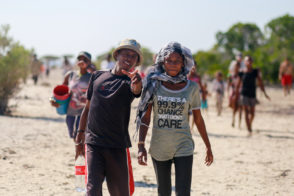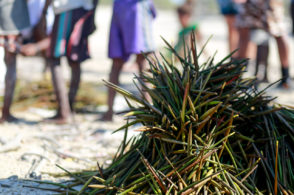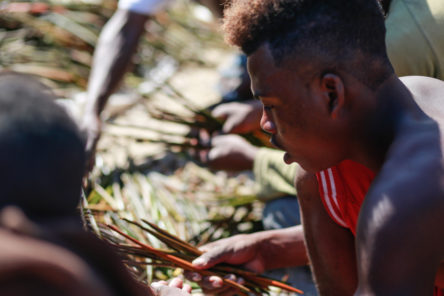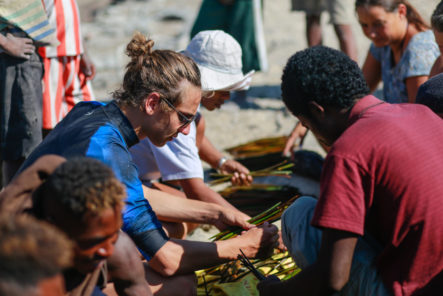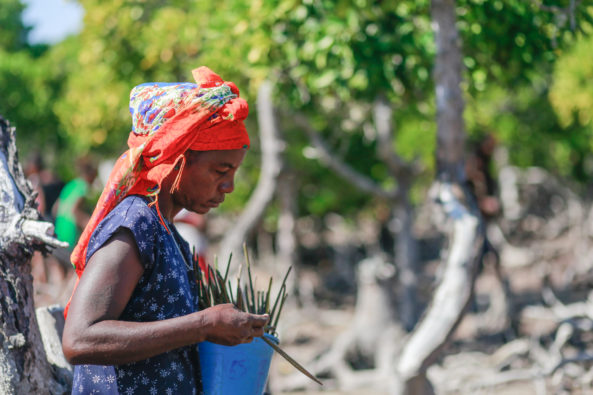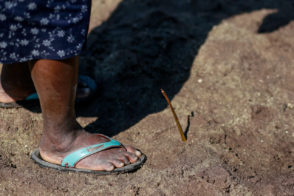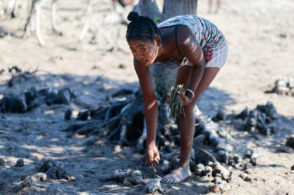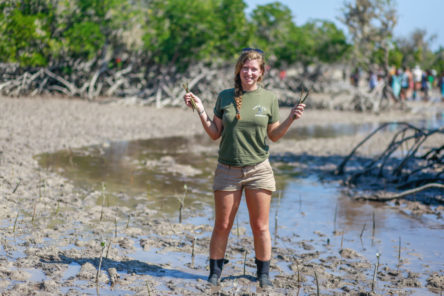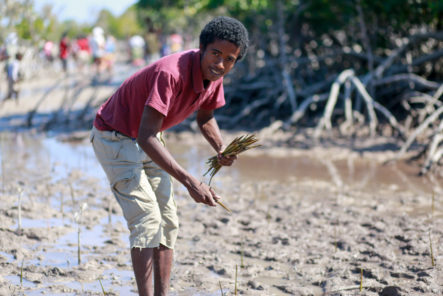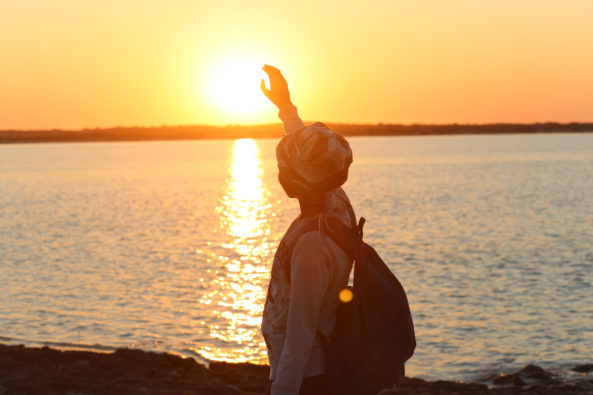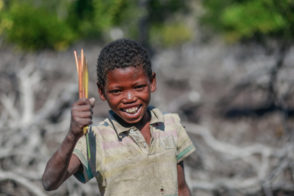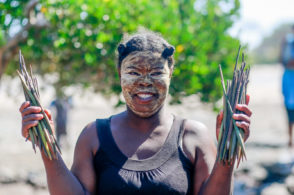Thousands of mangrove propagules poke through the sand across the sweeping shores of the Bay of Assassins. The arid Spiny Forest (an ecoregion almost entirely endemic to southwest Madagascar with other-worldly octopus trees and swollen baobabs), lies only steps away. Being from California’s Mojave Desert, which is hours from the coast, it’s strange for me to see the sea so close to desert vegetation.
It isn’t the first time I’ve walked through the mangrove forest here. I arrived at the village of Tampolove several days ago to do some work with Blue Ventures’ aquaculture team, but the scenery continues to amaze me.
I take a moment to soak in the landscape, reminding myself of how unique it is, before turning my focus back to the task at hand.
It is the annual mangrove festival, and all of Tampolove has gathered to plant mangrove propagules. They are joined by the rest of Blue Ventures’ Madagascar volunteers, who had arrived from Andavadoaka by pirogue the previous day.
The first order of business was to remove any brown or discolored propagules, a task made more difficult by the almost indistinguishable difference between some of the desirable and undesirable shades of propagule colour.
Once this was done, the selected propagules were sorted into groups of 100 before being planted in straight lines, each about two meters apart.
The entire planting process took no more than a couple of hours, but watching people from numerous cultures traipsing around together – ankle deep in mangrove mud – was a remarkable sight, and the reason they were doing so made the scene even more powerful.
The 1,500 ha of mangrove forest in the Bay of Assassins is crucial to the coastal communities in the Velondriake locally managed marine area (LMMA), who fish for the shrimp, fish, and crab that thrive there. They also use the trees for charcoal and timber, and while the local villages manage this resource sustainably, illegal logging from outside these communities is unfortunately causing increased degradation to the area.
To fight for a sustainable solution, 10 communities within the Velondriake LMMA implemented a locally-led mangrove carbon project in 2014:
Tahiry Honko
To fight for a sustainable solution, 10 communities (roughly 3,000 people) within the Velondriake LMMA, including Tampolove, implemented a locally-led mangrove carbon project in 2014 entitled Tahiry Honko (which means “preserving mangroves” in Vezo). Representatives from each of these communities established 210 ha of reforestation zone, 330 ha of permanent reserve, and annual quotas for how many mangrove trees each household can sustainably harvest.
We planted approximately 7,200 mangrove trees, and the president of Tampolove addressed everyone once we were done, expressing his gratitude and the importance of the Tahiry Honko project. Despite the language barrier, the sincerity in his voice was unmistakable.
It became clear to me that Tahiry Honko and the mangroves themselves are a point of pride for these communities—one that I was happy to share and help protect, even if just for a day.


